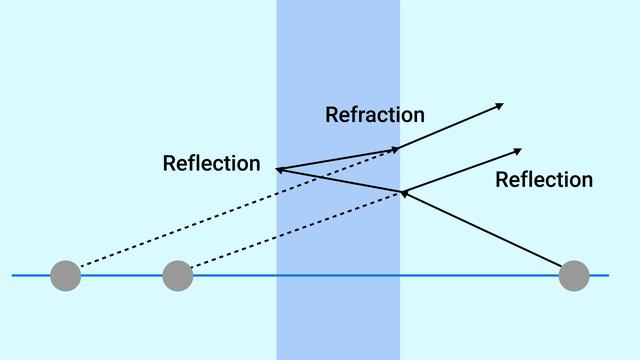

Introduction:
Refraction and reflection are two central peculiarities that happen when light collaborates with various mediums or surfaces. While the two of them include the way of behaving of light, they display unmistakable attributes and assume essential parts in different regular and mechanical cycles. In this article, we will investigate the critical contrasts among refraction and reflection.
Reflection:
Reflection alludes to the returning of light when it experiences a surface or limit between two unique mediums. The episode light beam, known as the "occurrence beam," strikes the surface and bounces off it, following the "law of reflection." This regulation expresses that the point of frequency is equivalent to the point of reflection, with the two points estimated comparative with the surface ordinary. Reflection permits us to see protests and is liable for the arrangement of pictures in mirrors.
Refraction:
Refraction happens when light passes starting with one medium then onto the next, causing a shift in its course and speed. This shift in course is because of the variety in the speed of light in various mediums. How much bowing that happens during still up in the air by Snell's regulation, which relates the points of frequency and refraction as well as the refractive records of the two mediums included. Refraction is liable for the way light goes from perspectives, crystals, and other optical gadgets, as well as peculiarities can imagine the twisting of light in water or the presence of a rainbow.
Key Contrasts:
Way of Light: Reflection includes the returning of light, while refraction involves the twisting of light as it passes starting with one medium then onto the next.
Surface Communication: Reflection happens when light interfaces with a surface, while refraction happens when light crosses the limit between two distinct mediums.
Point Relationship: all things considered, the point of rate is equivalent to the point of reflection. Interestingly, refraction observes Snell's regulation, which relates the points of rate and refraction.
Change in Speed: Reflection doesn't include an adjustment of the speed of light, while refraction causes an adjustment of the speed of light as it passes starting with one medium then onto the next.
Picture Development: Reflection can make a virtual or genuine picture, contingent upon the place of the item and eyewitness comparative with the mirror. Refraction, then again, can misshape or uproot a picture, however it doesn't make a mirror-like reflection.
End:
Refraction and reflection are particular optical peculiarities that emerge from the connection of light with surfaces and various mediums. Reflection includes the returning of light beams, while refraction brings about the twisting of light as it goes through various mediums. Understanding these distinctions is fundamental for fathoming different regular peculiarities, as well as the plan and usefulness of optical gadgets.

